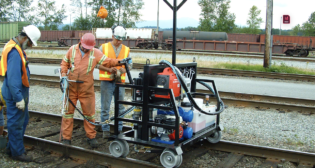
FTA Proposes Requirements to Improve Transit Worker Safety
Written by Marybeth Luczak, Executive Editor
“No one should go to work or ride transit worried that they won’t come home safely, and FTA is committed to making that ideal a reality,” FTA Administrator Nuria Fernandez said.
The Federal Transit Administration (FTA) on April 26 issued a Notice of Proposed Rulemaking on new safety requirements that would protect transit workers and riders. Comments are due June 26, 2023.
Authorized under the Bipartisan Infrastructure Law, FTA is seeking to update the Public Transportation Agency Safety Plans (PTASP) rule, codifying communication between frontline transit workers and management, which it said is “an important measure to address worker assaults.”
Congress in 2012 directed FTA to establish a comprehensive Public Transportation Safety Program, including the requirement for PTASPs. The PTASP rule became effective in 2019.
In the Notice of Proposed Rulemaking (download below), FTA reported that some of the new requirements will only apply to transit agencies serving areas with a population of 200,000 or more “that largely coincide with the biggest increases in reported transit worker assaults.” It noted that reported data in the National Transit Database shows there is a 121% increase in transit worker assaults.
Among the required changes to the PTASP rule are:
- “Establishing safety committees with equal numbers of frontline transit worker and management representatives to address concerns from workers and riders.” According to FTA, the proposed rule provides new guidance on safety committee membership, procedures and responsibilities.
- “Creating risk reduction programs to reduce accidents, injuries, and assaults on transit workers, and establishing annual targets based on measures FTA will establish in the National Public Transportation Safety Plan.” FTA said that risk reduction programs to be undertaken by transit agencies would include evaluating assaults on transit workers and vehicular/pedestrian safety risks and considering corrective strategies, such as installing bus driver shields or barriers; and deploying certain assault mitigation measures when a risk analysis performed by the safety committee determines such measures would reduce assaults on transit workers.
According to FTA, the PTASP rule requires “certain federally supported public transportation systems to develop plans that include and implement the Safety Management System approach,” which it explained is “a comprehensive, collaborative and systematic set of strategies to manage safety risk.” Additionally, the proposed rule incorporates the statutory requirement that transit agencies serving small urbanized areas develop their agency safety plans in cooperation with frontline transit worker representatives.
FTA reported that all applicable transit agencies would also be required to incorporate “de-escalation training” for frontline workers into their safety training programs.
For all applicable transit agencies, the changes would incorporate the Bipartisan Infrastructure Law requirement for agency safety plans to include “strategies to minimize exposure to infectious diseases, consistent with guidance from the Centers for Disease Control and Prevention or a state health authority,” FTA said.
The Notice of Proposed Rulemaking also requests transit agency feedback on experiences establishing confidential reporting methods for transit workers.
“No one should go to work or ride transit worried that they won’t come home safely, and FTA is committed to making that ideal a reality,” FTA Administrator Nuria Fernandez said. “This proposed rule prioritizes worker safety and gives transit workers a greater voice in protecting themselves during the workday. Updating this rule reflects the feedback FTA has received from the transit workforce across the country. Safer workers will mean a safer transit system and a safer ride for passengers.”



